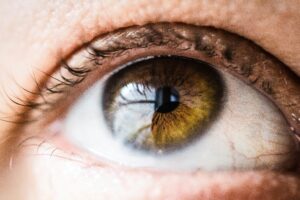
Over the past few decades, technology has become a crucial tool in improving health and quality of life. In healthcare, technological innovations have been proven to provide better outcomes for patients. Health facilities can now leverage technology or apps to track and contact patients who missed their doctor’s appointment and utilize messaging platforms to inform more people about broader health campaigns, like encouraging vaccinations. Today, we’re seeing more game-changing tools in every aspect of healthcare than ever before, including breakthroughs in contact lens technology.
According to a Research and Markets report, the US contact lens market currently has a projected 4.69% CAGR from 2024 to 2032, marking consistent growth. The same report mentioned innovative developments in contact lens technology as a key driving force behind this growth. The amount of contact lenses now available on the market, including Acuvue and Dailies, leverage new technology in order to appeal to a wider range of customers. For instance, lenses sold under the aforementioned brands are designed with HydraLuxe and blink-activated moisture technologies to prevent common issues like dry eyes. Brands like Biofinity, meanwhile, offer toric lenses specifically for contact lens users suffering from astigmatism. Aside from these examples, new research and developments in contact lens technology may spell relief for other eye diseases. Here’s what you need to know:
Monitoring glaucoma
New York has one of the highest glaucoma rates in the United States, according to an NIH study. Glaucoma, which is caused when the optic nerve is damaged by increased intraocular pressure (IOP) in the eye, can lead to irreversible vision loss. To improve glaucoma detection and treatment, researchers from Northumbria University and Boğaziçi University collaborated to develop GlakoLens, a pair of contacts that can monitor changes in eye pressure. These disposable lenses have an electrically passive sensor connected to a wearable electronic readout system that collects, stores, and analyzes patient data for evaluation. This new tech guarantees consistent IOP monitoring that can lead to more accurate glaucoma diagnoses.
Correcting color blindness
Research estimates that around 12 million people in the US have color blindness, which can affect many activities in daily life, like stopping at red lights and identifying safety signs. To solve this dilemma, researchers developed contacts that can assist people who are color blind. In 2021, ACS Nano researchers developed special-tinted contacts by infusing gold nanoparticles with lenses to improve green-red contrasts. Tharchers evenly fused these gold nanoparticles into a hydrogel polymer to create rose-tinted gels capable of scattering light and filtering out other colors while enhancing green-red colors for people with difficulty seeing these hues.
Monitoring glucose levels
Monitoring glucose is essential for diagnosing and managing diabetes, which affects around 1.8 million adults in New York, according to the state’s health department. Research shows that tears contain glucose, and higher levels of tear glucose were observed in diabetic patients compared with normal individuals. Today, researchers have created smart contact lenses with glucose biosensors to monitor glucose levels in tears to determine effective management strategies for diabetes and potentially offset side effects, including diabetic retinopathy, which can lead to vision loss. Unlike regular glucose monitoring devices that can cause skin inflammation, irritation, and bleeding, these smart contact lenses are soft to ensure comfortable use.
Innovations in contact lens technology offer promising potential for effective detection and management of eye conditions. As the tech and research into contact lenses continue to grow, these lenses may become game-changing tools that can push the boundaries of eye care treatment and healthcare in general. Check out our other stories on the River Journal North website for more health and local news articles.







